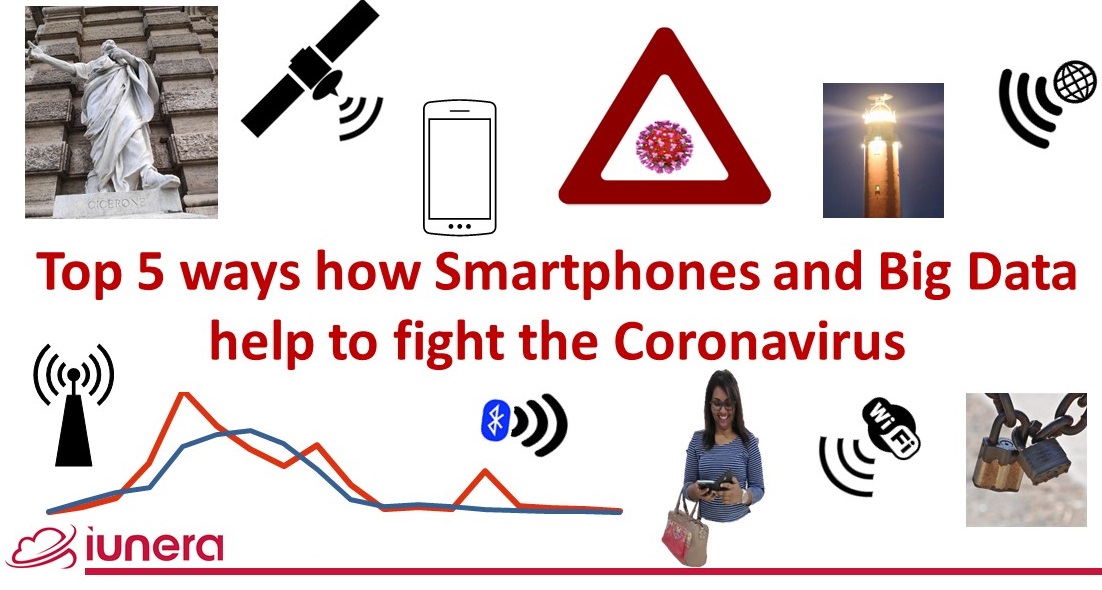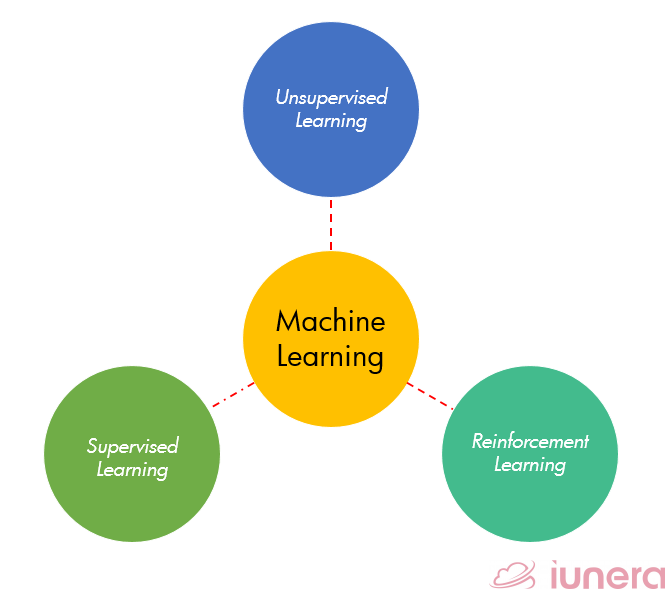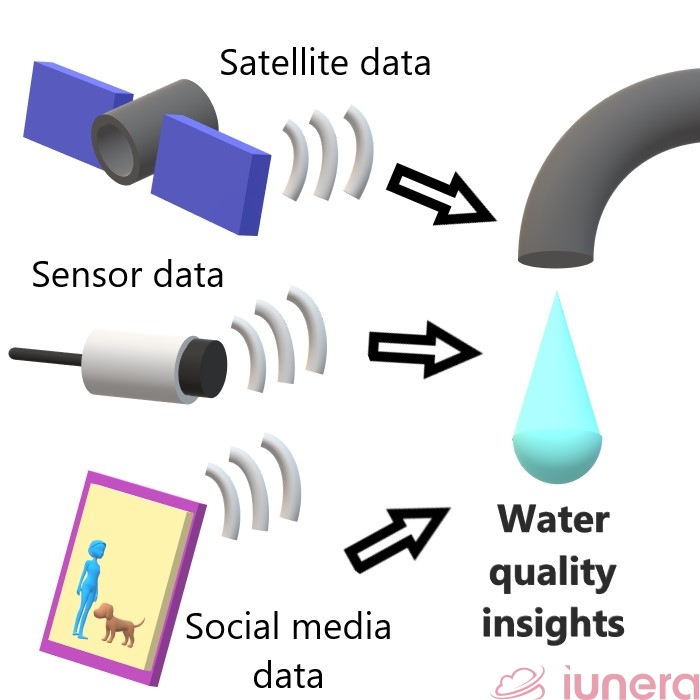Artificial Intelligence (AI) is said to be the next big thing in technology. And we think that Big Data is the next big thing too. But what are the next big things in Big Data and AI? We look at the 10 next big things in Big Data and AI that we find interesting.
How Big Data and AI work together
Firstly, how are Big Data and AI related? Well, they complement each other.
In other words, Big Data and AI have a mutually beneficial relationship.
XenonStack AI lists the following as the goals and applications of AI:
- Reasoning
- Automated learning and scheduling
- Machine learning
- Natural language processing
- Computer vision
- Robotics
- General intelligence
But to make these goals possible, AI needs data because AI is useless without data.
A higher volume of data given to AI makes AI better because more data can help organisations understand their audience a lot better.
Just like AI without data, Big Data is useless without software to analyse the data since humans can’t analyse Big Data themselves.
Here’s how AI can analyse Big Data in ways humans can’t:
- Detect anomalies (unusual occurrences) in the data.
- Determine the probability of a future outcome using a known condition that has a certain probability of influencing the outcome.
- Recognise patterns that humans don’t, especially patterns in bars and graphs.
The roles of Big Data and AI for each other lead to them being in an ongoing cyclical process:
- Data is fed into the AI engine.
- AI gets smarter with more data.
- Less human intervention is needed for the AI to run properly.
- AI becomes less reliant on humans.
- Society gets closer to realising the full potential of this Big Data-AI cycle.
This relationship between Big Data and AI is why we are mentioning both of them in this listicle.

Image Source: Michael Dziedzic
10 next big things in Big Data and AI
With that said, we came up with a list of the 10 next big things in Big Data and AI, some of which are beyond my imagination.
1. SMART Religion
My mind struggled to believe the words my eyes read in a Quora response to the question of AI’s next big thing by Kiryl Persianov, who holds a PhD in Ontology & Artificial Intelligence:
“It might be SMART religion, based on superhuman artificial intelligence, which is to disrupt the traditional religions with beliefs in God as a supernatural Entity, a superintelligent Being, or a transcendental Something or prime Force.”
Kiryl Persianov responded on Quora
One person is attempting to disrupt the traditional belief system using AI and that is AI engineer Anthony Levandowski.
Anthony has filed the paperwork for a new AI-based religion called Way of the Future (WOTF), consisting of Anthony as the Dean and a small council of advisors.
In the proposal, WOTF’s aim is to “contribute to the betterment of society through understanding and worship of the (AI) Godhead”.
Apart from challenging the current theological views, there are religious robots who do the job of a priest at religious places.
They may not be AI-powered but they show potential for machine learning capabilities.

Image Source: Owen Beard
2. Deeply Inclusive AI
This idea of a deeply inclusive AI was another answer to the same Quora question of AI’s next big thing.
In this thread, the answer given by Raj Subrameyer mentioned that current AI-based virtual assistants do not capture the various cultural contexts of its global user base.
“Now, imagine a world where we can give cultural context to this AI. Say, Google Home can automatically tell you that “Today is the indian festival of Diwali, do you want to buy your grandma her favorite indian sweet which is <whatever sweet>”. Currently this is not possible because there is no cultural context with AI.”
Raj Subrameyer also responded on Quora
The issue of training AI to make decisions about real people was raised by Davar Ardalan, Founder and Storyteller-in-Chief of IVOW at the Quest for Quality conference in Dublin in 2018.
To ensure fairness and ethical treatment of people, AI needs to be well-informed about cultural context, especially since AI systems are built by people who themselves have certain biases.
“A.I. systems are built by human beings with implicit biases. So it’s no wonder bots are often biased too.”
Inc.com Editorial Assistant Michelle Cheng wrote in 2018.
While biases can be tackled by feeding the AI with cultural contexts, I think that Natural Language Processing (NLP) can also be a part of this.
NLP leads to better understanding and processing of voice-based data, especially since voices come with various speech nuances like accents.
Thus, NLP enables voice-based virtual assistants to understand human intent more cohesively and provide more in-depth solutions to queries.
As a result, the most casual users can interact with NLP-based systems without the need for exotic codes.
Such users are able to express their feelings about certain brands, which the system will gather for sentiment analysis for relevant businesses.
3. Pandemic-related actions
The year has been largely plagued by the global Covid-19 pandemic that we’ve written extensively about pandemic-related analysis and actions.
We found that governments and scientists can use Big Data tools and Data Science to analyse the pandemic situation to contain it, especially in making sure that hospitals can cope with the increasing number of patients.
One way to do this is to use Data Science techniques to visualise and get insights about the spreading or the recovery of an infection like the Coronavirus.
With such insights, countries or regions can decide whether to re-introduce lockdowns to limit the spreading of an infection or not.
Big Data analysis tools then enable governments to control the effectiveness of the measures.
For example, the mobile cell tower data can be used to determine which citizens obey lockdown measures and how strong the mobility is.
The result of such analysis can then lead to insights on how to strengthen or loosen the restrictions to control a pandemic like that of the coronavirus better.
At the same time, the solutions for contact tracing range from precise geotracking of all citizens by capturing the data at a central point over app-based solutions for sharing the geolocations down to anonymous and privacy-aware contact tracing solutions.

4. Openings for Chief Data Officers (CDOs) and data scientists
As the title suggests, a CDO is a corporate data professional who is in charge of governing and utilising information within a company, particularly through data mining, processing, analysis, etc.
The need for CDOs arose in Europe with the implementation of the General Data Protection Regulation (GDPR) in 2018.
The GDPR is said to have a significant influence on Big Data analytics because companies are adapting to the more efficient and streamlined Big Data analytics solutions.
Partly because of this, as well as the need for data professionals who are well-versed in using analytics tools to turn data into actionable insights, the demand for CDOs and data scientists is increasing.
In 2019, Big Four audit firm KPMG surveyed 3,600 Chief Information Officers (CIOs) and technology executives from 108 countries.
From this survey, KPMG found that 67% of them struggled with skill shortages in Big Data/Analytics, Cybersecurity and AI.
In addition, tech giant IBM predicts that, by 2020, the number of job vacancies for data professionals in the USA will increase to 2.72 million.
Perhaps, it’s time for high school seniors to consider an IT degree as an option.
5. Machine Learning is changing the landscape
Machine learning (ML) is all about applying algorithms to learn patterns in data (yes, that includes Big Data).
In other words, ML is about training a Neural Network model on a sample dataset to perform certain predictions using algorithms.
With advancements like deep learning and reinforcement learning as ML’s subsets, ML is expected to disrupt daily business activities.
ML’s ability to learn from data will get better and better due to more advanced algorithms, deeper personalisation and cognitive services.
At the same time, ML and AI applications that have been unavailable to most companies, due to open-source domination, have now switched to becoming available.
This new availability is made possible thanks to commercial AI vendors who started building connectors to open-source AI and ML platforms and providing affordable solutions without complex configurations.

6. Quantum computing
Quantum computing is defined as an area of computing focused on developing computer technology based on the principles of quantum theory.
Quantum theory explains the behavior of energy and material on the atomic and subatomic levels.
In the context of computing, our classical computers encode information in bits of 1 or 0.
Meanwhile, quantum computing encodes information in much smaller subatomic bits than our classical computers.
These subatomic bits are known as quantum bits or qubits, which can exist in more than one state (a 1 and a 0) simultaneously.
This allows quantum computers to handle operations at much higher speeds with a much lower energy consumption.
This matters because analysing and extracting insights from gigantic volumes of data can take too much time for any company to afford since time is money.
Being able to cut down all the time of data management using quantum computing would be a great deal for many industries.
7. Augmented systems
“Augmented analytics is the use of enabling technologies such as machine learning and AI to assist with data preparation, insight generation and insight explanation to augment how people explore and analyze data in analytics and BI platforms.
It also augments the expert and citizen data scientists by automating many aspects of data science, machine learning, and AI model development, management and deployment.”
How research and advisory company Gartner defines augmented analytics
Specialised AI systems and tools go beyond just ML. They consist of a varied set of building blocks such as NLP, Machine Vision, Robotic Process Automation, and Predictive and Prescriptive Analytics.
These blocks respectively help to communicate, understand images and video, execute processes and make decisions.
Combining these AI blocks would help analyse Big Data in simpler ways by enhancing the process of extracting insights with automated operations.
The data can be converted into accessible decisions that companies can act upon.
8. Combining Internet of Things (IoT) with Big Data and AI
We know the amazing things Big Data and AI can do. We also know the amazing things IoT can do, especially for sustainable water management.
So, it would make sense for the combination of IoT with Big Data and AI to be one of the next big things for Big Data and AI.

As Analytics Insight said, “AI and the Internet of Things together is a match made in technical heaven!!!”. Along with Big Data, of course.
Or as Forbes called it, “three sides of the same coin”.
Combining these technologies pave the way for a large number of life-changing innovations and applications such as:
- smart homes
- wearable trackers for healthcare
- wearable trackers for sports
- water supply-based sensors
- smart and sustainable cities
- automated contact tracing, particularly in restaurants
- garbage collection analysis
“IoT, Big Data, and AI all feed into each other and create an ecosystem of automation – IoT devices collect data on millions of criteria, which is then collated in the cloud, and used to train and improve AI algorithms.
As such, ensuring that people understand how IoT, Big Data and AI interact and improve each other is the most important thing we can do to bring real improvements to our lives.”
Article contributor Charles Towers-Clark summed up the holistic nature of IoT, Big Data and AI on Forbes.
9. Climate change research
In Part 3 of our Big Data-driven sustainable development article series, we found that there are so many Big Data-driven climate action initiatives.
These initiatives often involve climate change research to observe the conditions of our planet and find ways to fix them.
For example, several studies have worked to explain the seriousness of ocean warming.
Ocean warming and acidification pose a major threat to many species and ecosystems, including marine invertebrates.
For one ocean warming study, researchers at Harvard University and the UK’s National Oceanography Centre used Big Data and advanced statistics to investigate the changes in ocean temperature for the past century.
Through this study, the researchers hoped to determine if human contribution to ocean warming is greater than we thought and to understand what needs to be avoided for the future.
This study also aimed to correct the errors of historical temperature measurements in the National Oceanic and Atmospheric Administration’s database.

Image Source: Techlogger
10. Faster actionable data
Yeah, what’s the point of gathering and analysing data if you’re not gonna use data to take action quickly?
Fast data allows for processing in real-time streams, so data can be analysed as quickly as one millisecond.
And faster data analysis can help companies make quicker decisions and act immediately.
This is especially true for emergencies like natural disasters where the right decisions need to be made quickly to save lives.
Even better if decisions can be made before the disaster happens using predictive analytics, just like how El Nino was predicted in advance.
A lot to do in Big Data and AI
Big Data and AI are complementary to each other in a cyclical way. AI works using data while Big Data is analysed by AI beyond the capabilities of the human mind.
This Big Data-AI relationship is our motivation for listing the next big things for both Big Data and AI. And as this list has proven, the Big Data-AI relationship is evident.
This list also proved that the sky is the limit in the world of Big Data and AI for bringing our world to greater heights.
However, it has also proven that we still need people to power these technological advancements. How would all these tech exist without the right people to create and innovate?
And who else would use analytics tools to turn data into actionable insights other than data professionals who know the next big things in Big Data and AI?
